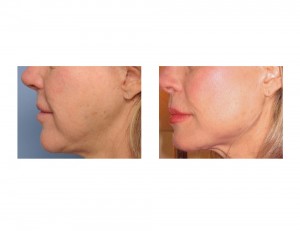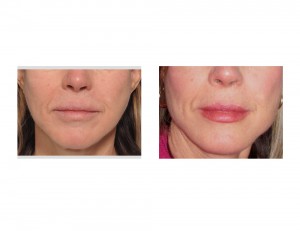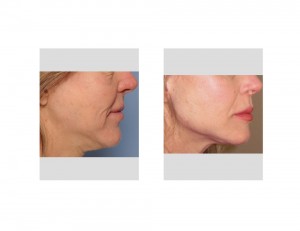Background: The jawline is an important facial feature of both men and women. Occupying the entire lower third of the face, it has both a large surface area as well as serves as a distinct transition between the face and the neck. While a well defined and ‘strong’ jawline has been traditionally assigned as a masculine feature, it has become increasing apparent in contemporary culture that women can be considered attractive with a well defined jawline as well.

The angle in the back of the jaw is reflected in how the vertical ramus and the horizontal body of the mandible forms during growth. The length of the jaw angle is created by the development of the vertical ramus of the mandible from the downward growth created by the condyle. Shorter jaws and chin have a high angle point and a more steep mandibular plane angle. The longer the development of the vertical ramus, the lower the jaw angle will be with a less steep mandibular plane angle. A pleasing obtuse jaw angle is usually around 120 degrees or so.
Case Study: This 52 year-old female sought a more defined jaw angle shape to improve her lower facial appearance. She had been through multiple previous jaw angle implant surgeries which were either complicated by implant malposition, infection or the placement of jaw angle implants that only provided a wider jaw angle but with no vertical elongation.


Besides the aesthetic improvements that can be obtained in women with the creation of vertical jaw angle enhancement is the side benefit of providing skeletal support to sagging tissues. The additional soft tissue that is needed to cover a longer jaw angle inevitably comes from the neck. This can help to pick up loose skin from the neck and fill out side of the face ‘deflation’.
Case Highlights:
1) For women that prefer a stronger jawline appearance, lowering the jaw angles with implants can produce a more defined lower third of the face.
2) Vertical lengthening jaw angle implants drop down the back part of the lower jaw giving women a less steep mandibular plane angle.
3) Strong jawlines in women have become more popular but it is important to appreciate that this is often more of a vertical jaw angle change rather than a width one.
Dr. Barry Eppley
Indianapolis, Indiana




